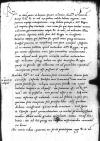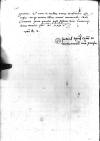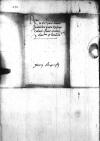Letter #1347
Piotr TOMICKI to Ioannes DANTISCUSCracow (Kraków), 1535-08-12
| received [1535]-08-17 Manuscript sources:
Auxiliary sources:
Prints:
| ||||||||||
Text & apparatus & commentary Plain text Text & commentary Text & apparatus Excerpts concerning Dantiscus' travels
Reverendissimo in Christo Patri, domino
Reverendissime in Christo Pater et Domine, frater et amice carissime et honorande.
Accepi litteras Reverendisssimae Dominationis Vestrae, ex quibus valde lubens cognovi eam futuris nuptiis[1] interfuturam neque dubito, quin sit a
Demiror autem, qui factum sit, quod ceteri quoque
Habebit Reverendissima Dominatio Vestra domum satis commodam domini
De novis rebus, quarum me fecit participem, ago Reverendissimae Dominationi Vestrae gratias et eam in multos annos incolumem esse cupio, meque mutuo illius amori commendo.
Datae
Vestrae Reverendissimae Dominationis
[1 ] The wedding ceremony of


